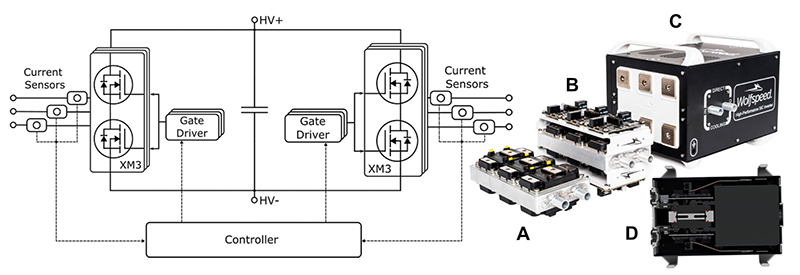
Click image to enlarge
Figure 1: The system block diagram (left) showing three main components: the two converter modules, each with a gate driver, and the controller. The power modules mounted on the cold plate (A), and then in the power core with gate drivers (B), are also shown outside the dual inverter enclosure (C). Handles and feet are provided for portability, (D) shows the 204 mm x 267.5 mm cross section